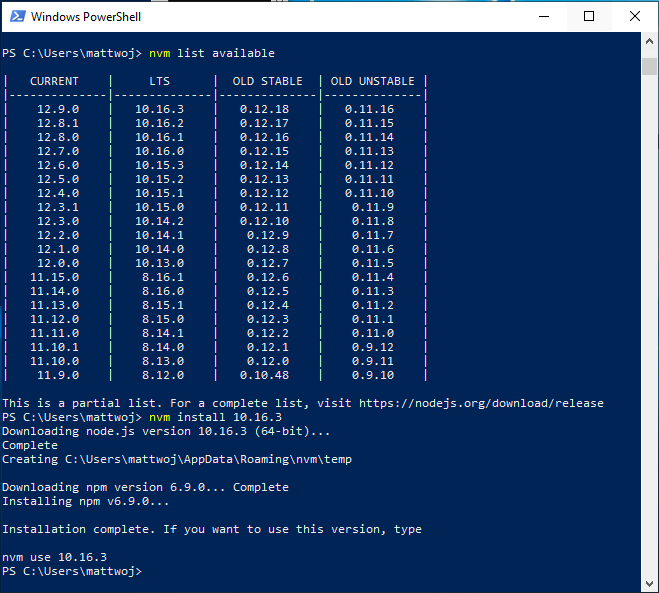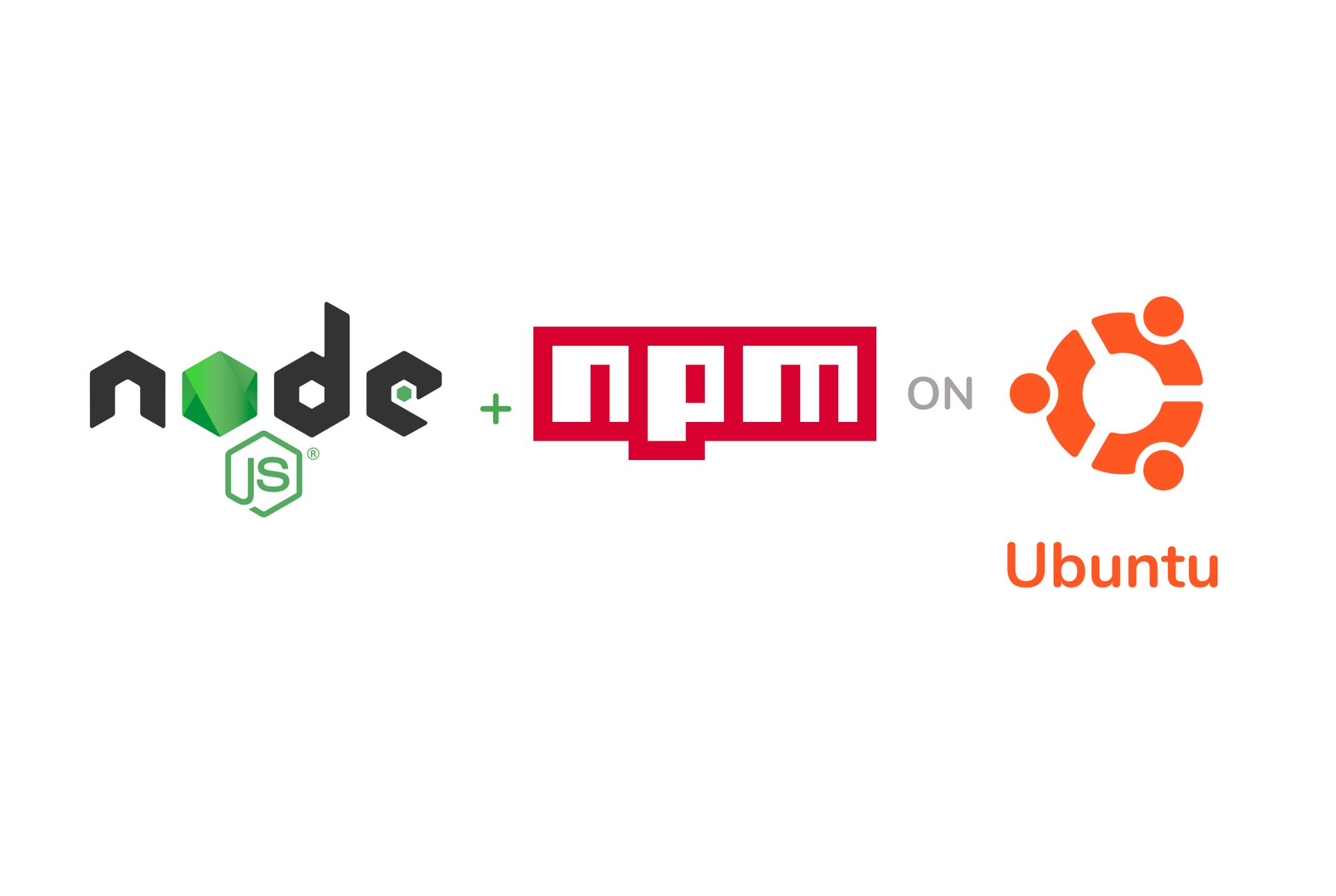

#Nvm install node lts download#

NB: Security updates to LTS Version 16.13.2:.Latest LTS Version: 16.13.2 (includes npm 8.1.2) which per the official node.js download page (c 2022 Q1) is: Here are instructions from NodeSource on getting the latest node. npm Docs: Try the latest stable version of node, which recommends:įor some Linux distributions (Debian/Ubuntu and RedHat/CentOS), the latest node version provided by the distribution may lag behind the stable version.Search (DDG): install latest stable version of node yields:

#Nvm install node lts how to#
Can you figure out how to switch to the version of Node.js that your OS came with?.What did you find? What might they be useful for? Run the nvm command with no arguments and read through the list of sub-commands that we didn't cover in this tutorial.You should now be all set to execute and work on your your Node.js project(s) no matter which version of Node.js they are written for. Then we looked at how you can use nvm to install any number of Node.js versions and switch between them as needed. Then we used nvm to install the latest LTS release of Node.js and set it as our environment's default Node.js version. In this tutorial we walked through installing the nvm bash script and making sure it works. Tip: Use nvm alias default to switch the version of Node.js used by default when starting a new shell. Switch to the latest installed version: nvm use node To switch to another version for the active shell use nvm use.įor a specific version provide a version number: nvm use 10.16.3 You can then switch between them depending on which project you're working on. The real benefit of nvm comes when you install different versions of Node.js. Use nvm to install other versions of Node.js You can change this behavior using the nvm alias command.Įxample to set the default version of node to use when starting a new shell to 10.0.0: nvm alias default 10.0.0 Practically this means that anytime you start a new shell, and the nvm.sh script is sourced, it will default that shell to using the installed lts release. This indicates that nvm has set lts/* as the default alias. Note this line Creating default alias: default -> lts/* (-> v10.16.3). Verify it worked, and that the version is correct: node -version nvm install -ltsĭownloading and installing node v10.16.3. Now that you've got nvm installed let's use it to install, and use, the current LTS version of Node.js. Use nvm to install the latest LTS release of Node.js Finally, run the nvm command to get a list of all the available sub-commands and to further verify that installation worked.


 0 kommentar(er)
0 kommentar(er)
